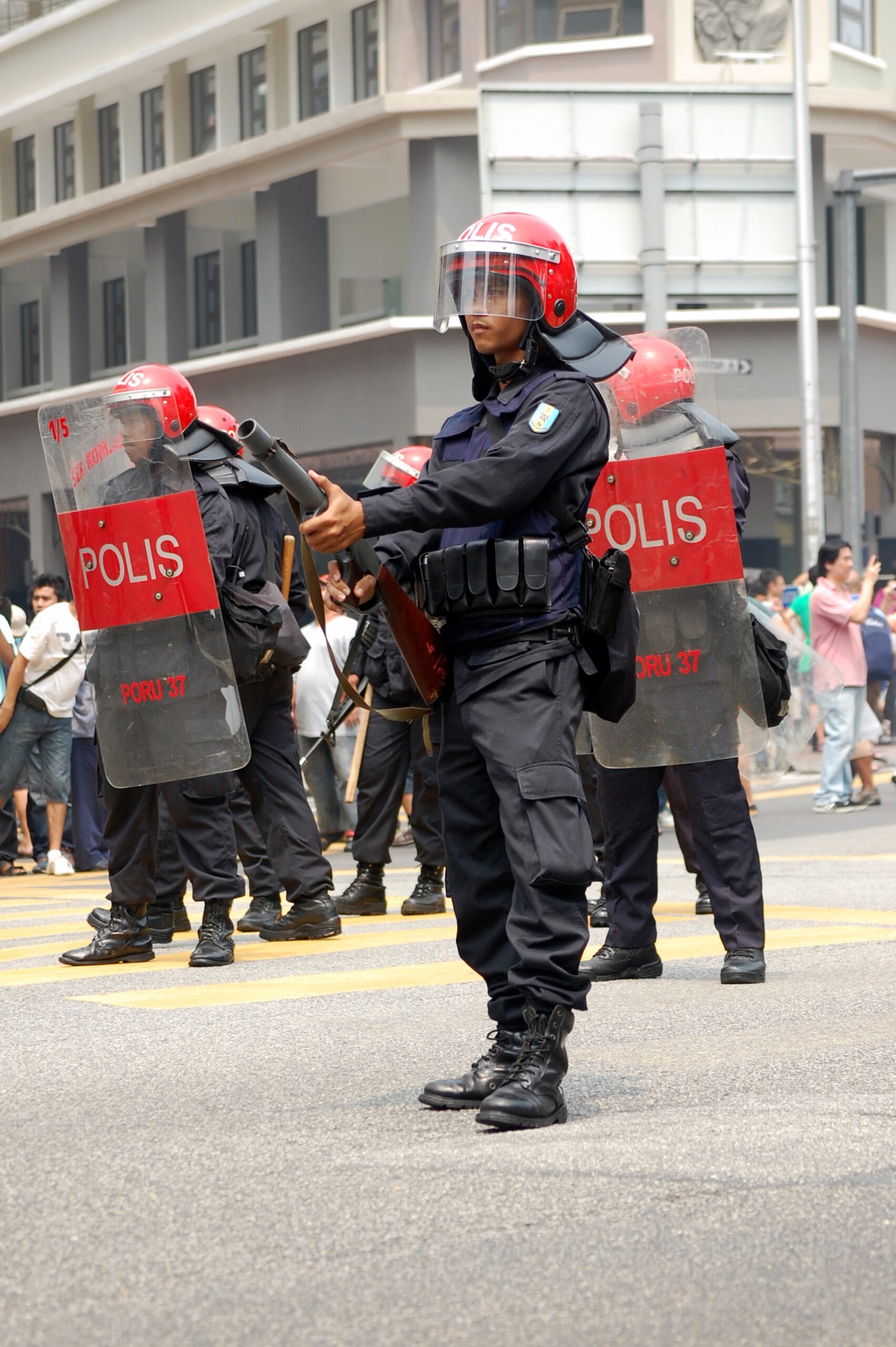Photo credit: Wikimedia Commons
This analysis summarizes and reflects on the following research: Dornschneider, S. & Henderson, N. (2016). A Computational Model of Cognitive Maps Analyzing Violent and Nonviolent Activity in Egypt and Germany. Journal of Conflict Resolution, Vol. 60(2) 368-399.
Talking Points
- Individuals are more likely to turn to violence when they believe they are responding to an aggressive government.
- Individuals are more likely to choose nonviolent methods as a means to improve living conditions.
- Individuals are more likely to choose nonviolent methods in response to the unacceptable consequences of violence.
- Individuals use nonviolent methods with the knowledge that violence would make reaching their goals impossible.
- Religion is not a significant motivating factor behind violent activity against a government.
Summary
What makes some engage in violent activity against their government while others choose nonviolent methods? Are would-be actors influenced by an aggressive government? What, if any, influence does Islam give to initiate violent or nonviolent action?
To shed light on these questions, this study applied a method called the cognitive mapping approach (CMA) to learn more about why some people resort to violence against their states while others, living under the same social and political conditions, do not. Political violence against a state is most commonly studied by analyzing the behavior and motivations of violent groups. However, this research examines the underlining question of what motivates individuals living under similar circumstances to choose violent, and others to choose nonviolent methods to protest their government.
The authors format their CMA into graphical models to analyze 477,604 different belief combinations connected to violent and nonviolent activity. Their model is then used to analyze and compare the beliefs of 27 violent and nonviolent Muslims from an authoritarian state (Egypt) and non-Muslims from a democratic state (Germany). The analysis of individuals from two different countries and religious beliefs is used to identify whether or not Islam or the type of government has a significant influence over a person’s decision to use violence or nonviolence.
The authors found in both violent and nonviolent behavior, an individual’s perception of state aggression was the most reliable indicator. Additionally, a person is more likely to use nonviolent methods against the state when s/he believes the severity of state aggression to be low.
The authors also found that the belief systems motivating violent and nonviolent activity are surprisingly similar and that there were no significant differences between violent Muslims and non-Muslims. This is further evidence against the claim that Islam is a major influence in violent behavior.
The researchers identified several “Chains of Belief” that may influence a person’s decision on whether to engage in violent or nonviolent activity:
Belief patterns connected to decisions to use violence:
- Violence as last resort of defense against increasingly threatening state environments
- Violence as a response to existing or increasing state aggression
- Violence as means to reach necessary goals and an acceptance of negative consequences
Belief patterns connected to decisions to use nonviolence:
- Nonviolent activity as means to improve strained living conditions
- Nonviolent activity as acceptance of state structures in spite of strained living conditions
- Nonviolent activity as response to unacceptable consequences of violence
- Nonviolent activity as response to threatening state environment and support by the people
- Nonviolent activity as response to threatening state environment and impossibility of reaching goals by violence
The findings show that individuals decide to choose violence based on beliefs about a threatening government environment. Interestingly, the decision to choose nonviolence is also based on negative beliefs about government environment, confirming the author’s hypothesis that the underlying beliefs between choosing violence or nonviolence are similar. Also important, the findings showed that an individual’s beliefs about Islam, or contact with violent groups, had very little influence over their decisions to choose violence.
Contemporary Relevance
This research is relevant to many of the violent conflicts involving state and non-state actors around the world. If viewed through the lens of the findings of this study, the violent Syrian civil war can be partially traced back to citizens’ reaction to an overly aggressive Assad regime. If Assad’s government had adopted a more amicable, less aggressive posture, this research suggests that the protests against the government would have likely been nonviolent in nature.
Also relevant is the finding suggesting that Islam as a religion is not inherently violent and is not a significant influence in causing its followers to act violently. There has been a growing level of anti-Muslim rhetoric – Islamophobia – in the media and political debate lately. Research such as this is crucial to the processes of debunking the fear-mongering and shaming that many have become accustomed to and which will be normalized in public discourse if not challenged.
Practical Implications
The findings pointing to the lack of motivation for violent behavior when states do not use threatening behavior suggests that open dialogue and systems to address grievances between a government and its people can be a deterrent to the escalation of violence. The practice of constructive conflict transformation offers numerous viable systemic approaches where the conditions that reduce the likelihood of violent conflict are reduced. So-called ‘deep prevention’ addresses economic grievances, lack of political access, or group discrimination. Inclusive and good governance address the structural issues. Existing conflict can be addressed through mediation, dialog programs, or confidence-building measures (see Ramsbotham, Oliver, Hugh Miall, and Tom Woodhouse. 2016. Contemporary Conflict Resolution: The Prevention, Management and Transformation of Deadly Conflicts. 4thed. Cambridge: Polity.)
Continued Reading
Why Civil Resistance Works: The Strategic Logic of Nonviolent Conflict by Erica Chenoweth & Maria Stephan. (2012). (http://cup.columbia.edu/book/why-civil-resistance-works/9780231156820)
The Truth About Islam by Andrew Mack (http://www.slate.com/articles/news_and_politics/politics/2016/01/islam_isn_t_inherently_violent_or_peaceful.html)
Yes to assertive, no to aggressive by Tom Hastings (http://www.peacevoice.info/2016/05/10/7298/)
Keywords: civil war, governance, nonviolence
The above analysis is from Volume 1, Issue 4, of the Peace Science Digest.

